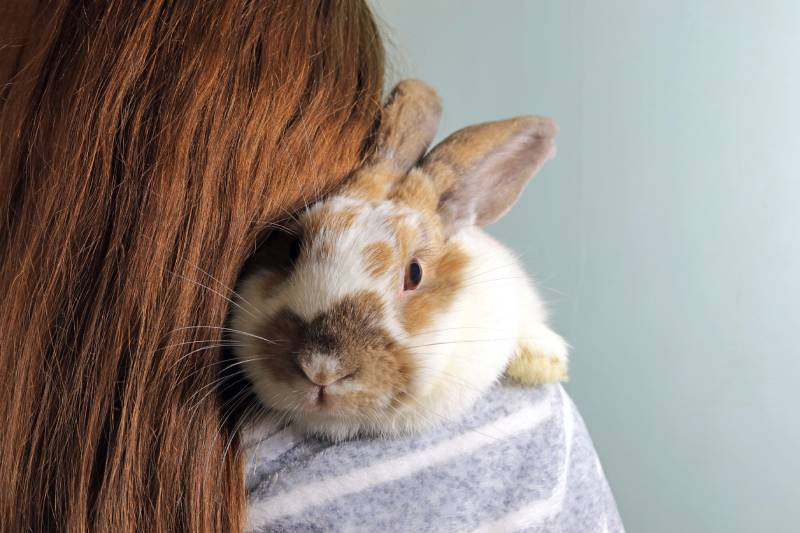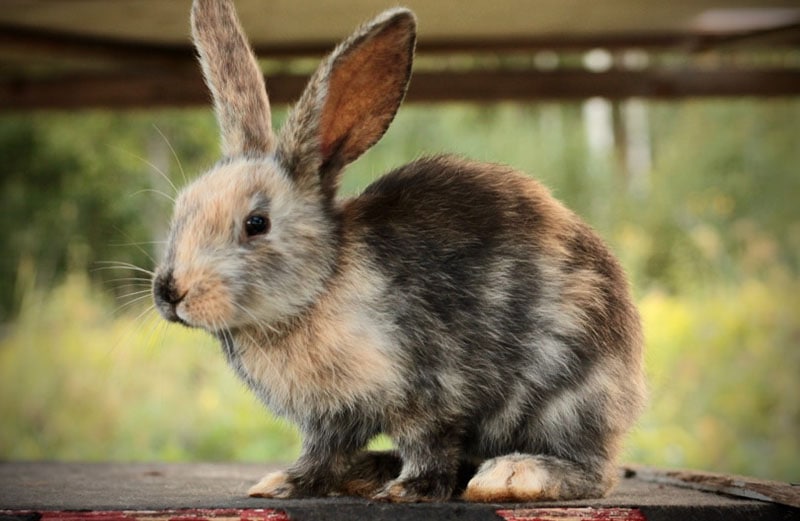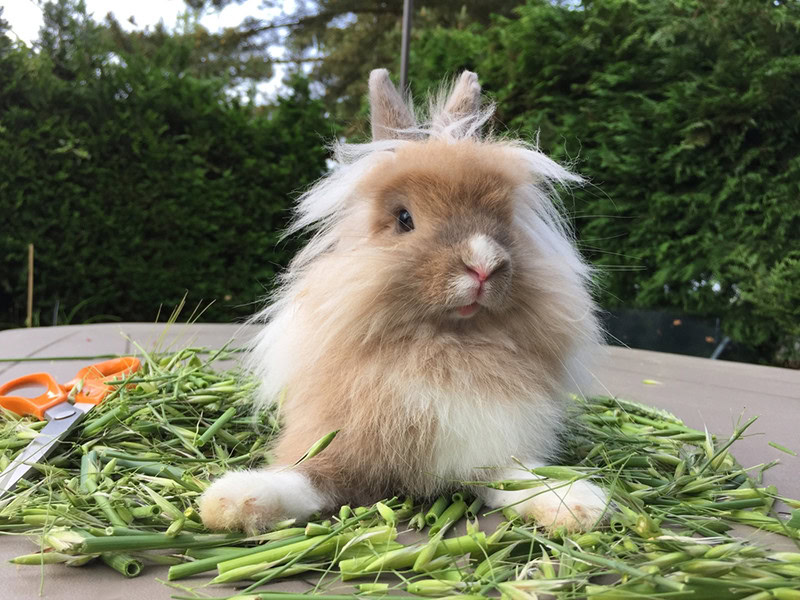Flemish Giant Rabbit: Care Guide, Lifespan, Traits & Pictures
By Ed Malaker
Updated on
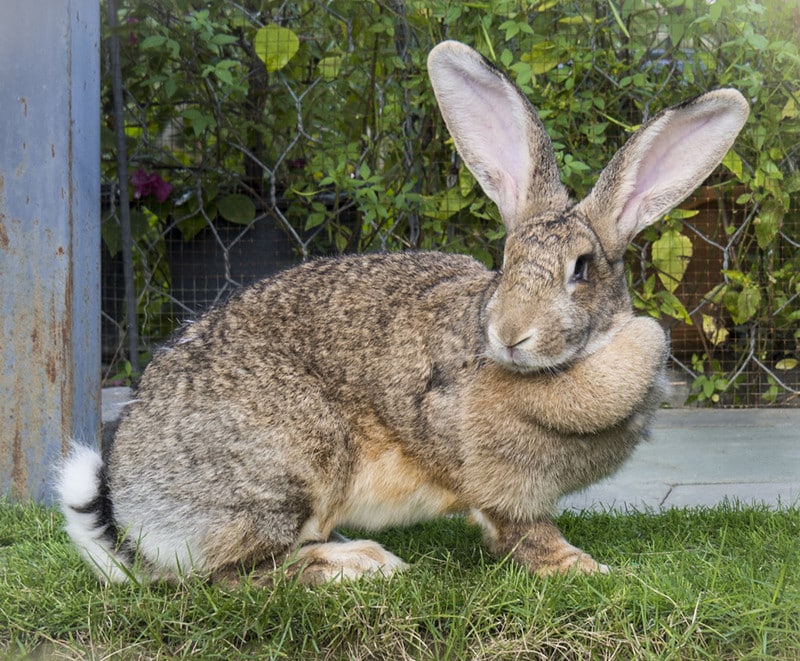
The Flemish Giant rabbit is also known as the “Gentle Giant.” They’re a popular pet due to their substantial size, gentle temperament, and large ears. They first appeared in Flanders, Belgium, in the 16th century and have been gaining popularity ever since. If you are on the fence about getting one for your home, keep reading for information about their size, lifespan, habitat requirement, and health to help you make an informed decision.
| Size: | Giant |
| Weight: | > 14 lbs. |
| Lifespan: | 5–7 years |
| Similar Breeds: | Continental Giant, English Giant, Giant Chinchilla, French Lop, Checkered Giant |
| Suitable for: | Owners with plenty of room and experience |
| Temperament: | Docile, affectionate |
While their exact lineage is unknown, most experts believe that the Flemish Giant is a mix of larger European rabbits. They have a docile nature and are quite intelligent, as they can learn tricks, respond to commands, quickly pick up on cues, and engage in interactive play. Their ability to learn and adapt also contributes to their ease of handling and socialization, making them a pleasure to interact with and train.
Flemish Giant Characteristics
 How Much Do These Rabbits Cost?
How Much Do These Rabbits Cost?
The cost of Flemish Giant rabbits can vary depending on several factors, but you should expect to spend $50 to $150 or more depending on the quality of the rabbit. Factors affecting the price include the breeder you choose, their experience, and the parents’ lineage. You can sometimes reduce costs by adopting your rabbit from a local animal rescue or shelter. It’s also important to remember that there are many other expenses, including ongoing ones, that you need to consider before purchasing your new pet.
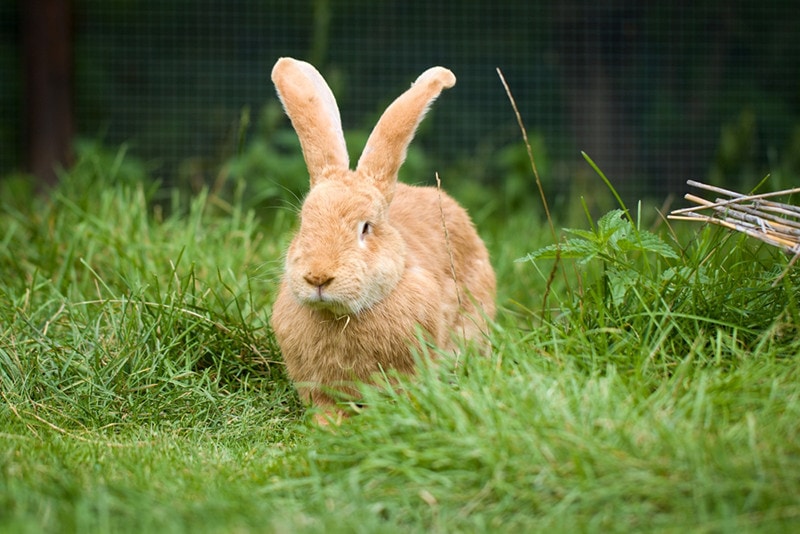
Temperament & Intelligence of the Flemish Giant
The Flemish Giant is gentle and docile, making them a popular choice among rabbit enthusiasts. They are generally friendly, calm, easygoing, and tolerant of handling and enjoy human interaction, making them well-suited for individuals of all ages, including children. They can also learn and respond to training cues, so you can teach them tricks and commands, and their intelligence enables them to adapt well to their environment.
Do These Rabbits Make Good Pets? 👪
Yes, Flemish Giant rabbits make excellent pets. They have a gentle and calm temperament and are quite social, often enjoying human interaction. They are intelligent enough to learn tricks, and their large size appeals to many people. With proper care, the Flemish Giant has a relatively long lifespan of 10 or more years, comparable to many smaller rabbit breeds.
Does This Rabbit Get Along With Other Pets?
Flemish Giants usually get along with other rabbits and can also get along with dogs and cats if you introduce them slowly and carefully supervise them for signs of trouble. However, these rabbits can be aggressive, so you must monitor them closely when introducing them to rodents, reptiles, and birds. Also, some rabbits are naturally more friendly than others.

Things to Know When Owning a Flemish Giant
Food & Diet Requirements 🥕
Your Flemish Giant will need plenty of fresh hay to help them manage their ever-growing teeth. It also provides necessary fiber and aids in digestion. These rabbits need fresh vegetables, including leafy greens, herbs, and vegetables, along with special rabbit pellets that help balance their diet.
Habitat & Hutch Requirements 🏠
Flemish Giants require plenty of space to move around comfortably, and most experts recommend the enclosure size for a single Flemish Giant to be at least 12 square feet, with more being better. The habitat must also stand at least 4 feet tall so they have room to jump comfortably. The enclosure should have a solid floor, and there should be several hides to which your rabbit can retreat if they feel stressed. It should be well-ventilated and protect your rabbit from predators and extreme weather.
Exercise & Sleeping Needs 🐇
Flemish Giants are generally more relaxed than smaller rabbit breeds, but they still require regular exercise to stay healthy and mentally stimulated. Create a designated play area where they can hop and explore free of danger, and allow supervised free roaming. They are most active during dawn and dusk and may nap or rest for several hours at a time throughout the rest of the day, so they need a quiet place that is away from foot traffic and loud noises.
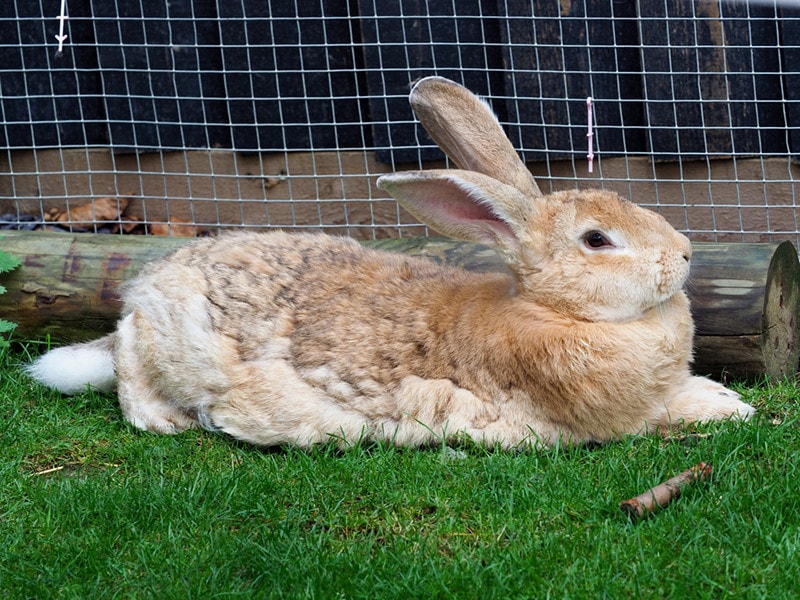
Training 🥎
Training your Flemish Giant is not difficult and can be fun. Keep training sessions short and frequent to maintain your rabbit’s interest and attention. Begin by teaching them simple commands like “come,” “stay,” and “no.” Use positive reinforcement techniques like treats, praise, and gentle petting to reward desired behaviors. Be patient and stay consistent, as it can take several sessions for your rabbit to learn a new trick.
Grooming ✂️
Flemish Giants have dense fur, and regular brushing will remove loose hair, prevent matting, and keep their coats clean and healthy. They will also need you to trim their nails occasionally to prevent discomfort, and you should check their ears frequently for signs of discharge or discoloration that might indicate an infection. They will need chew toys, untreated wooden blocks, or branches to help wear down their teeth naturally, and you will need to inspect their teeth occasionally for signs of overgrowth.
Lifespan and Health Conditions 🏥
The Flemish Giant can live to be 7 years old if they are well taken care of and remain in good health.
- Ear Mites
- Respiratory Issues
- Obesity
- Heat Stress
Minor Conditions:
- Ear Mites: Ear mites are a common parasitic infestation in rabbits that can cause itching, head shaking, and discharge from the ears. It’s also contagious and can spread to other rabbits. If you suspect ear mites, consult a veterinarian for proper diagnosis and treatment.
- Respiratory Issues: Flemish Giants are prone to respiratory problems due to their large size and weight. Bacteria, viruses, or environmental factors can cause respiratory infections, and clinical signs include sneezing, coughing, nasal discharge, and labored breathing. Prompt veterinary attention is crucial for the diagnosis and treatment of respiratory issues.
Serious Conditions:
- Obesity: Since Flemish Giants tend to be more sedentary than smaller breeds, they often don’t get enough exercise, making them prone to weight gain. Obesity can lead to various health problems, including joint issues, respiratory difficulties, and a shorter lifespan, so you’ll need to watch their weight, feed them a balanced diet, and keep them active.
- Heat Stress: Flemish Giants can be more susceptible to heat stress due to their large size and dense fur, so you need to ensure that they have access to a cool and shaded area during hot weather and monitor them for signs of overheating, such as excessive panting, lethargy, or drooling.
Male vs. Female
Males tend to be slightly larger and heavier than females and are usually more laidback and docile, while females are more assertive and independent. Males can also be more territorial, while females might suffer from mood swings.
The 3 Little-Known Facts About the Flemish Giant Rabbit
1. Flemish Giants Hold the World Record for Being the Largest Rabbit Breed.
2. Despite Their Large Size, Flemish Giants Possess Impressive Jumping Abilities.
3. Flemish Giants Come in Several Colors, Including Tan, Gray, Black, White, Blue, Fawn, and Steel Gray.
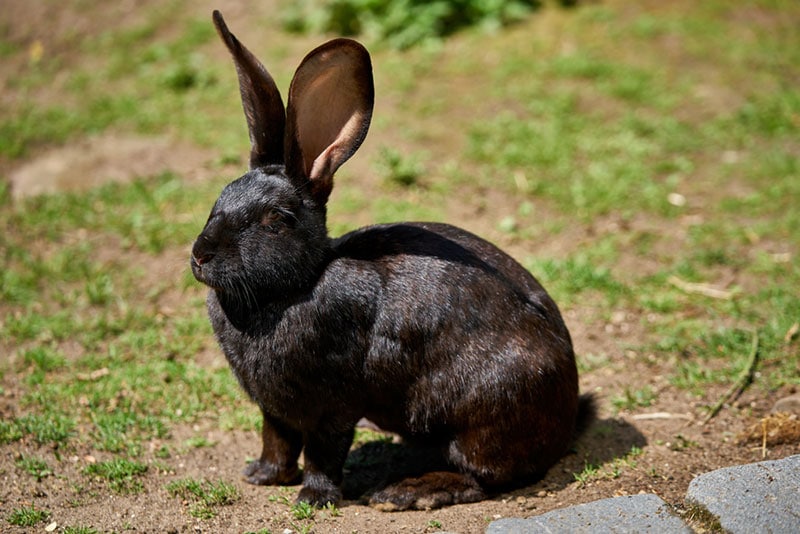
Conclusion
Flemish Giant rabbits can make great pets due to their massive size, docile and friendly temperament, and high intelligence that makes them easy to train. They also like interacting with humans and are not too difficult to maintain. However, they do require quite a bit of space to run and jump, and their size means they will likely eat more than smaller breeds, which will make them more expensive over the long run. However, if you have the space, these rabbits are perfect for a single owner or a large family, and they are also hugely popular with children.
Featured Image Credit: krithnarong Raknagn, Shutterstock
 How Much Do These Rabbits Cost?
How Much Do These Rabbits Cost?